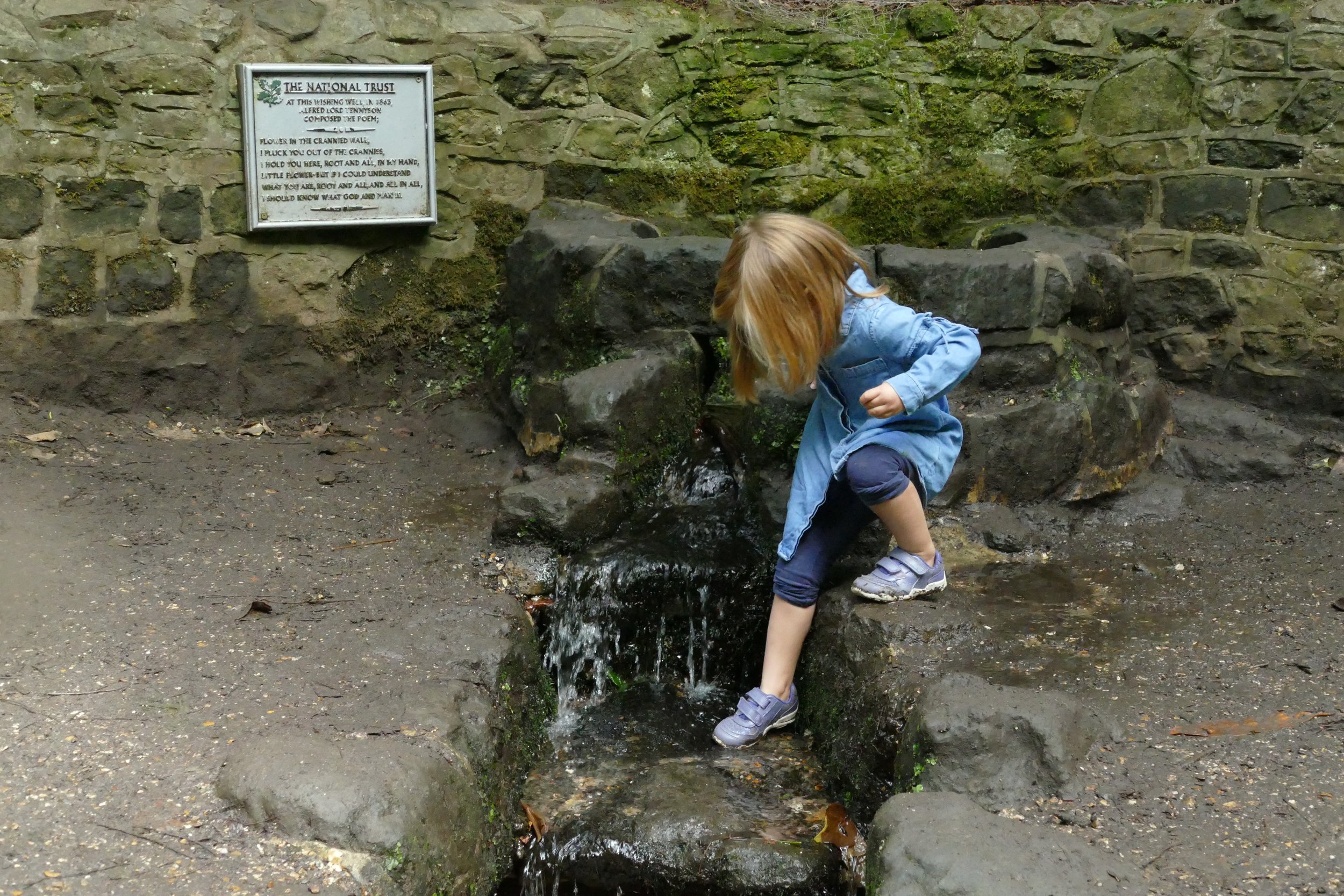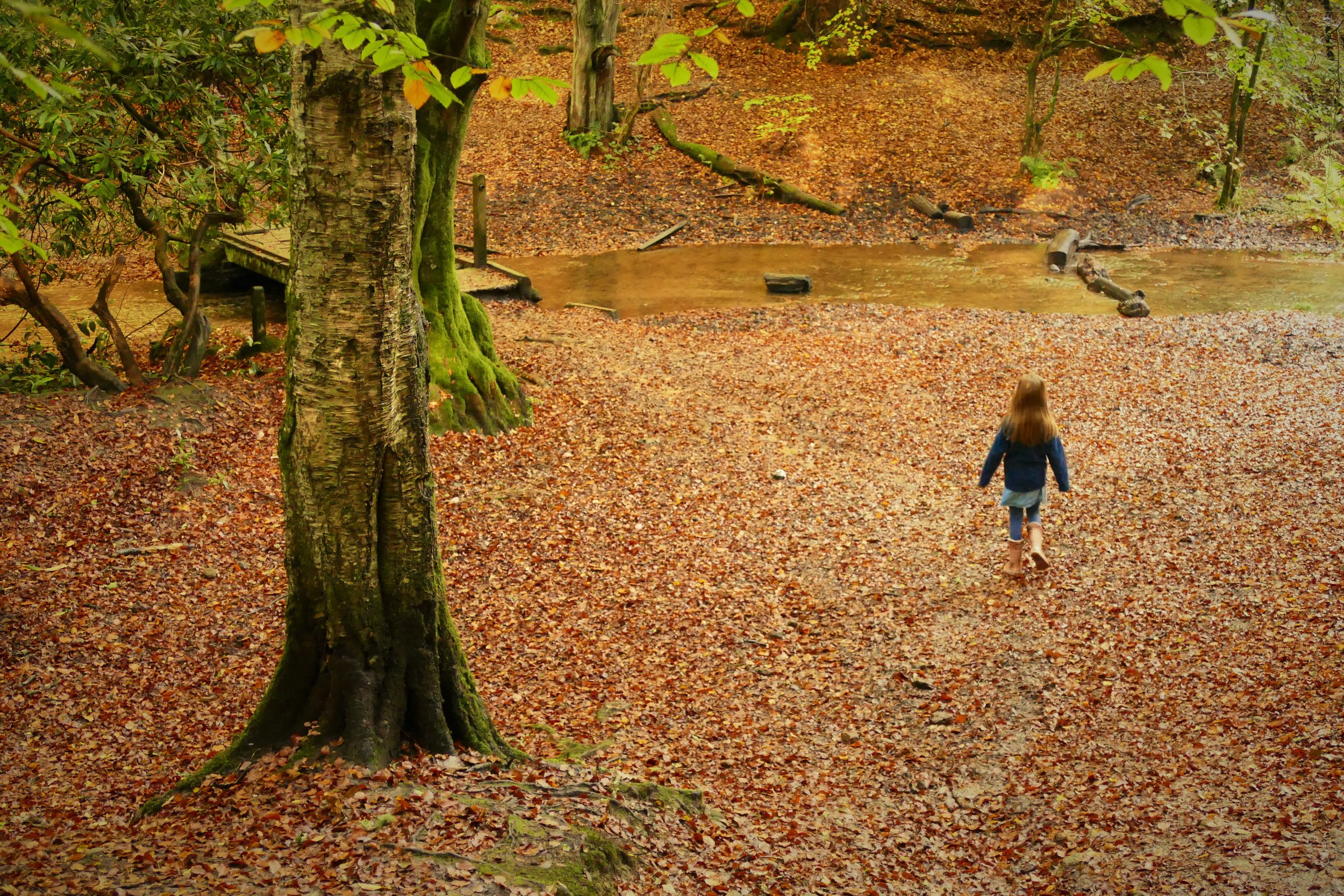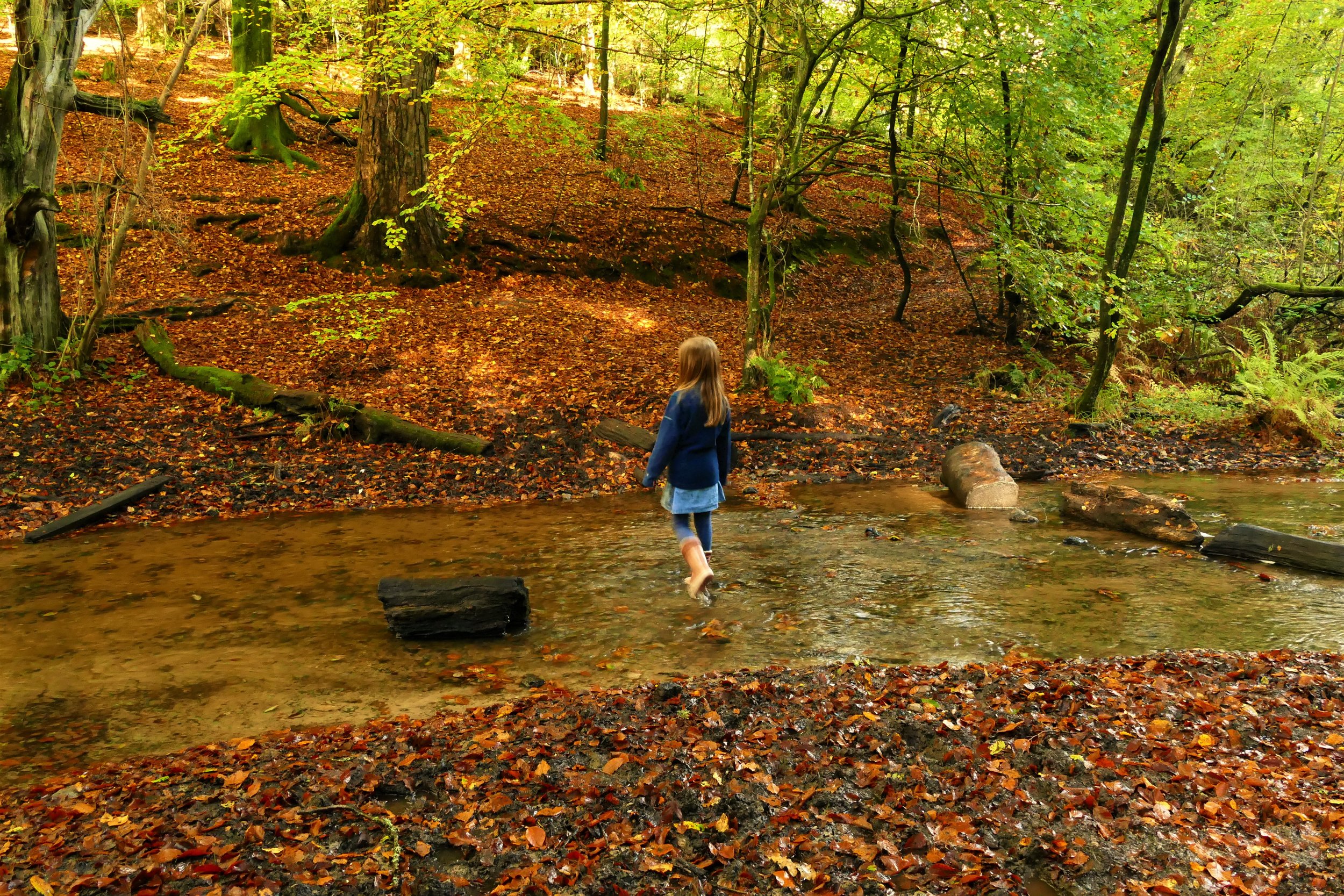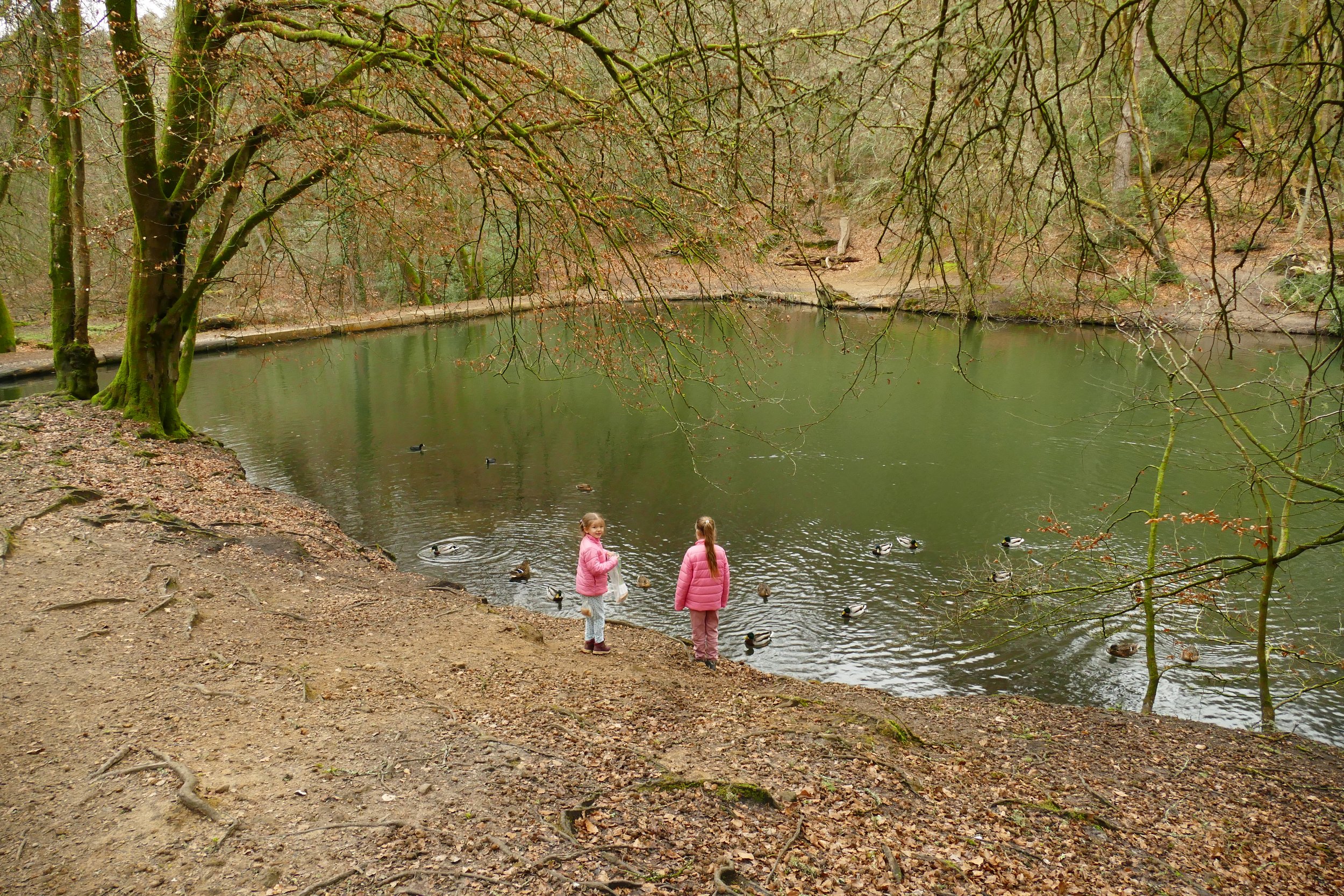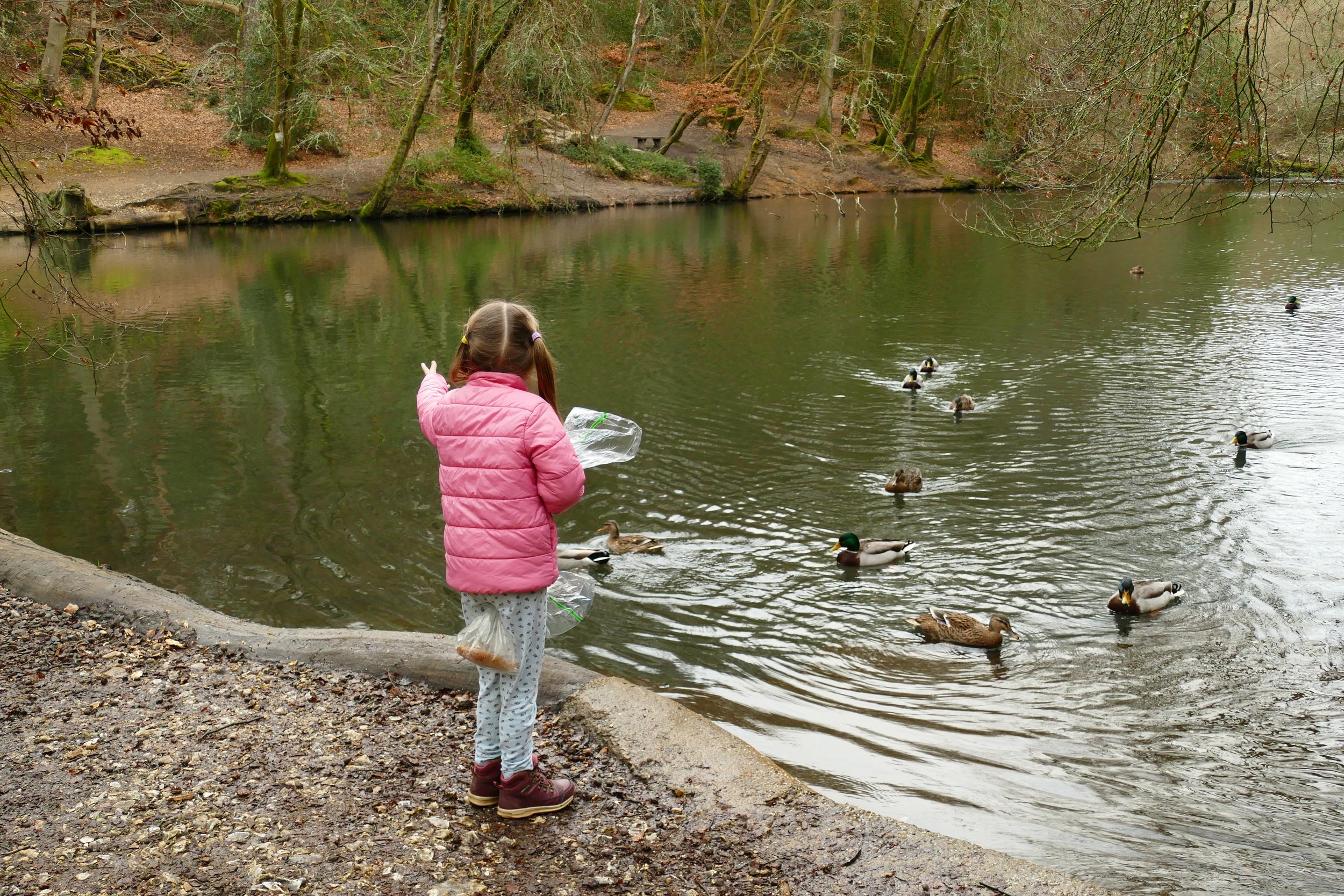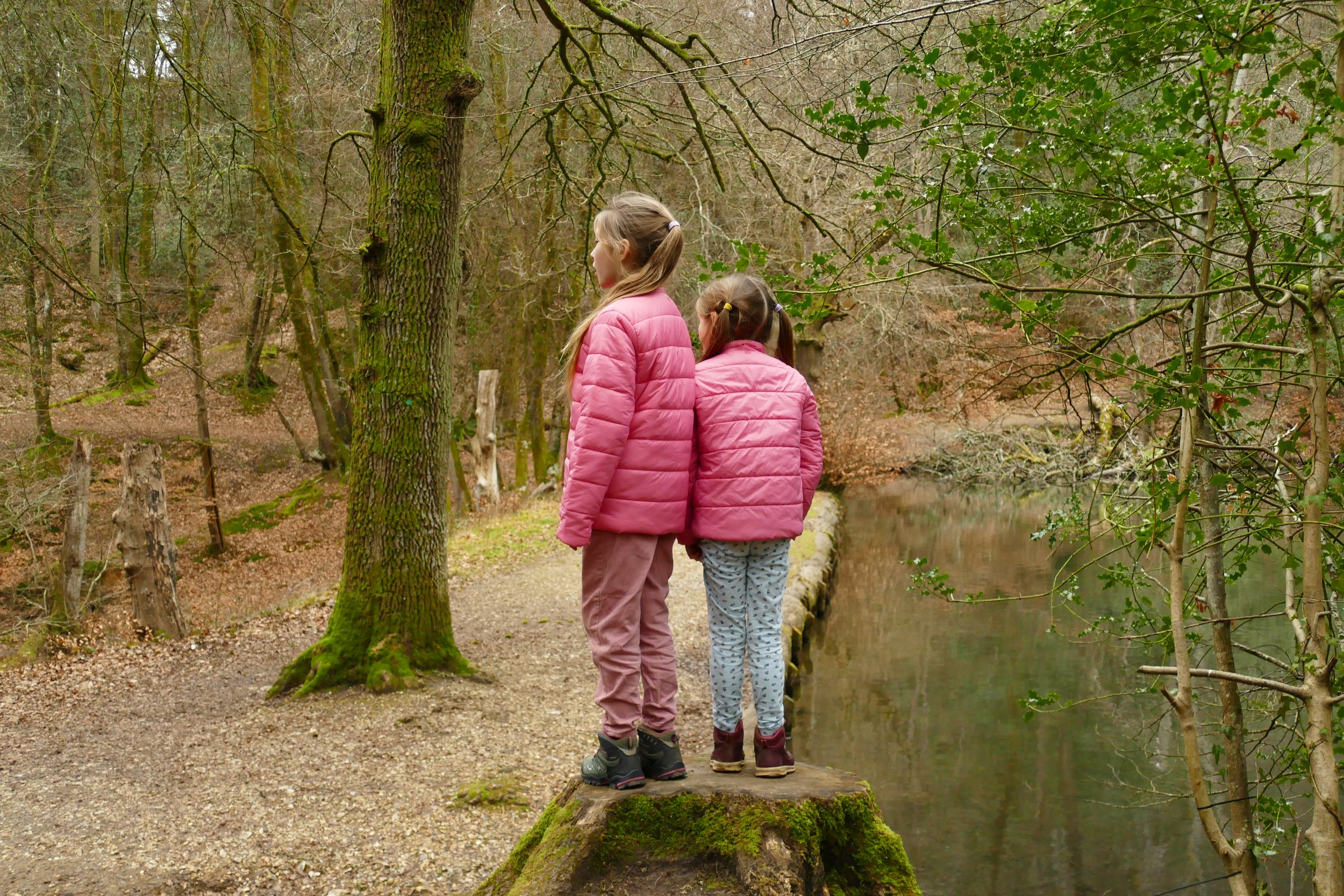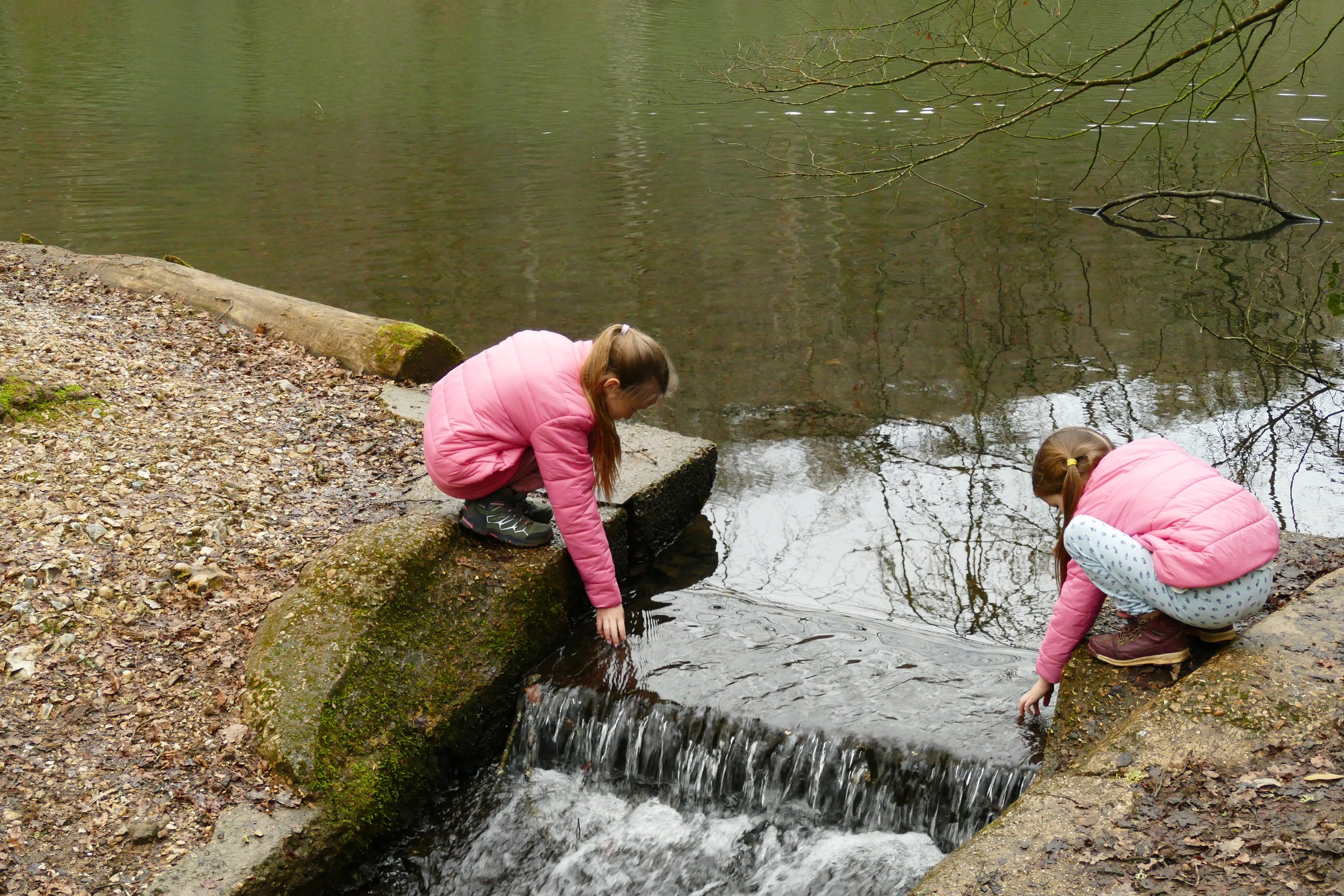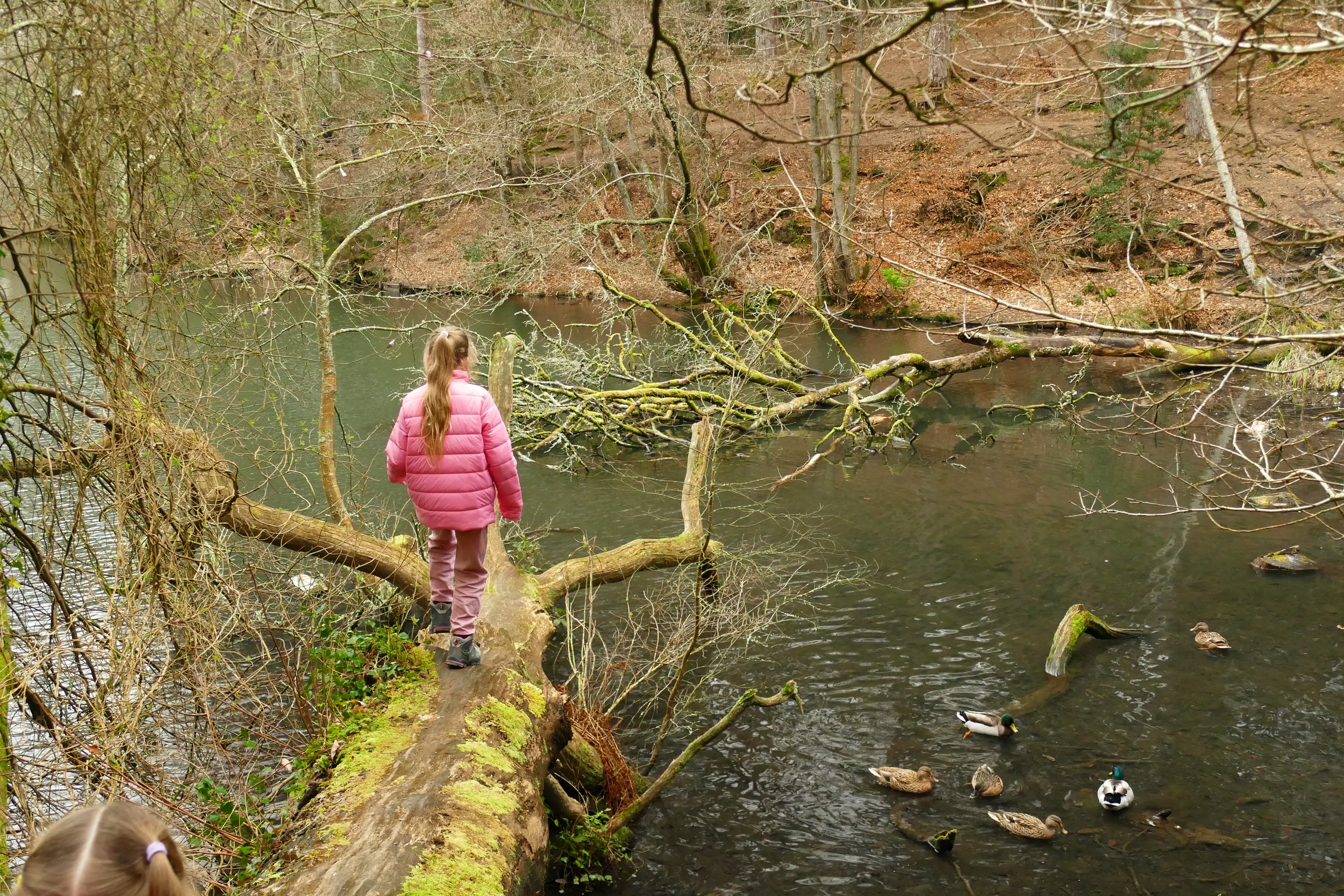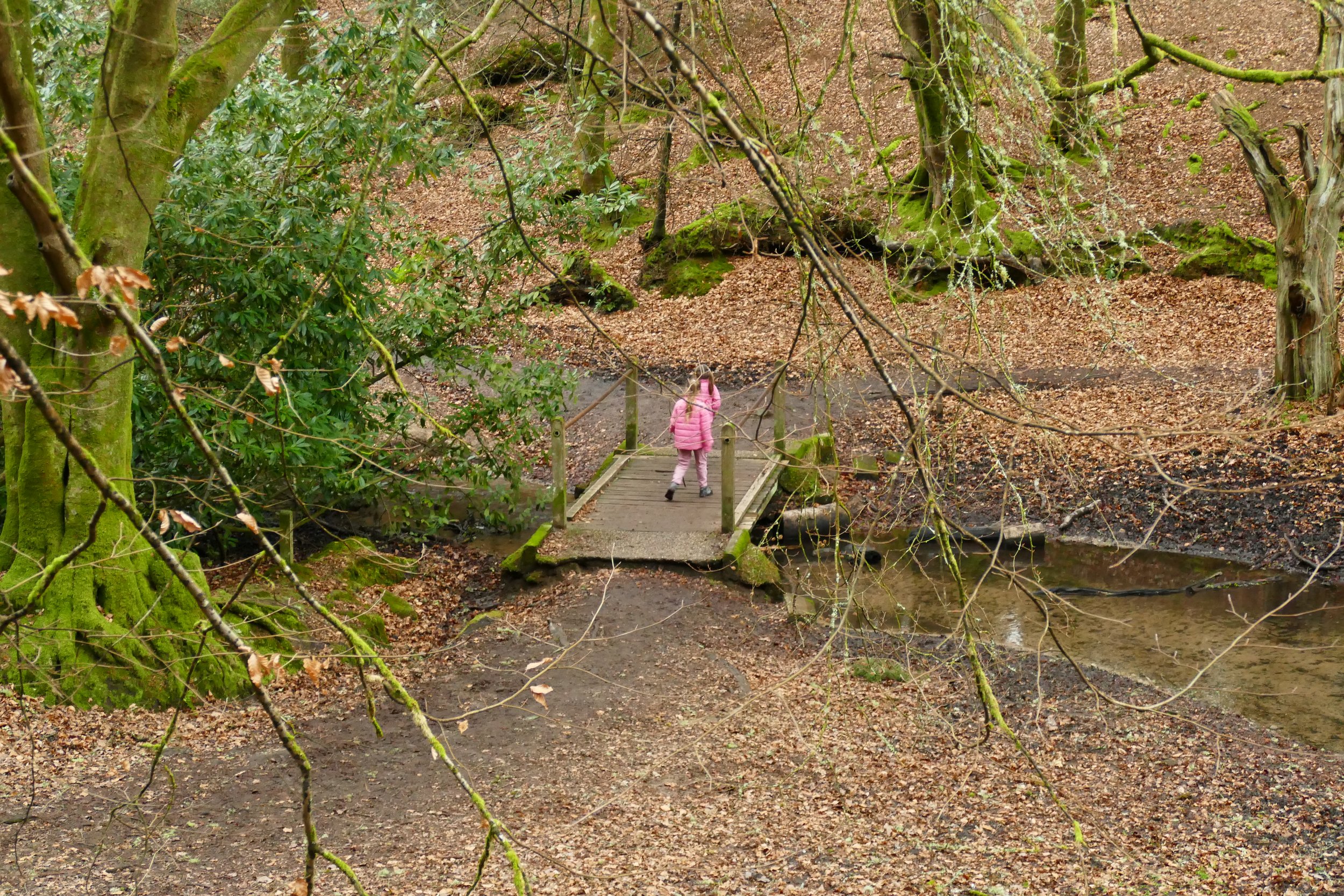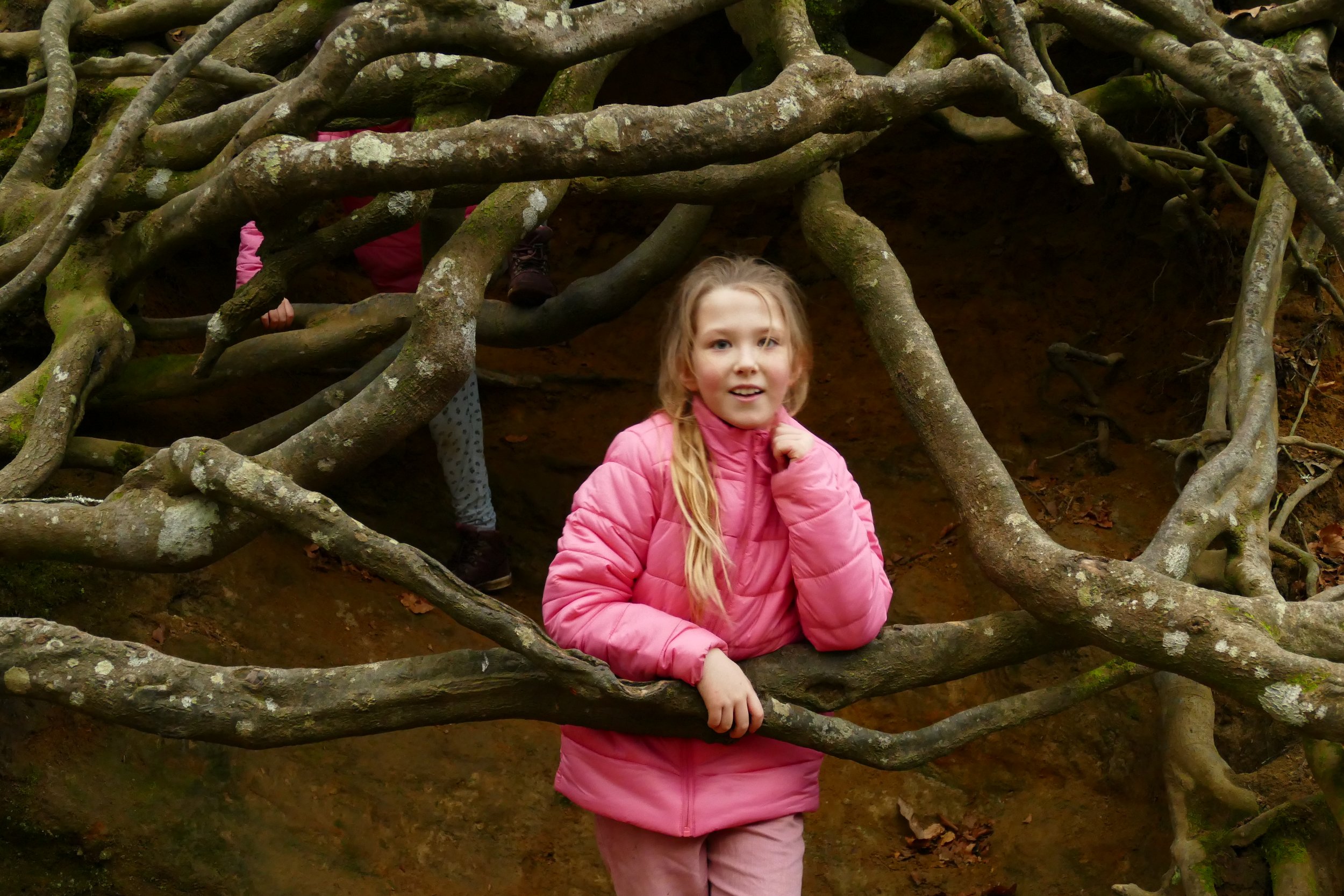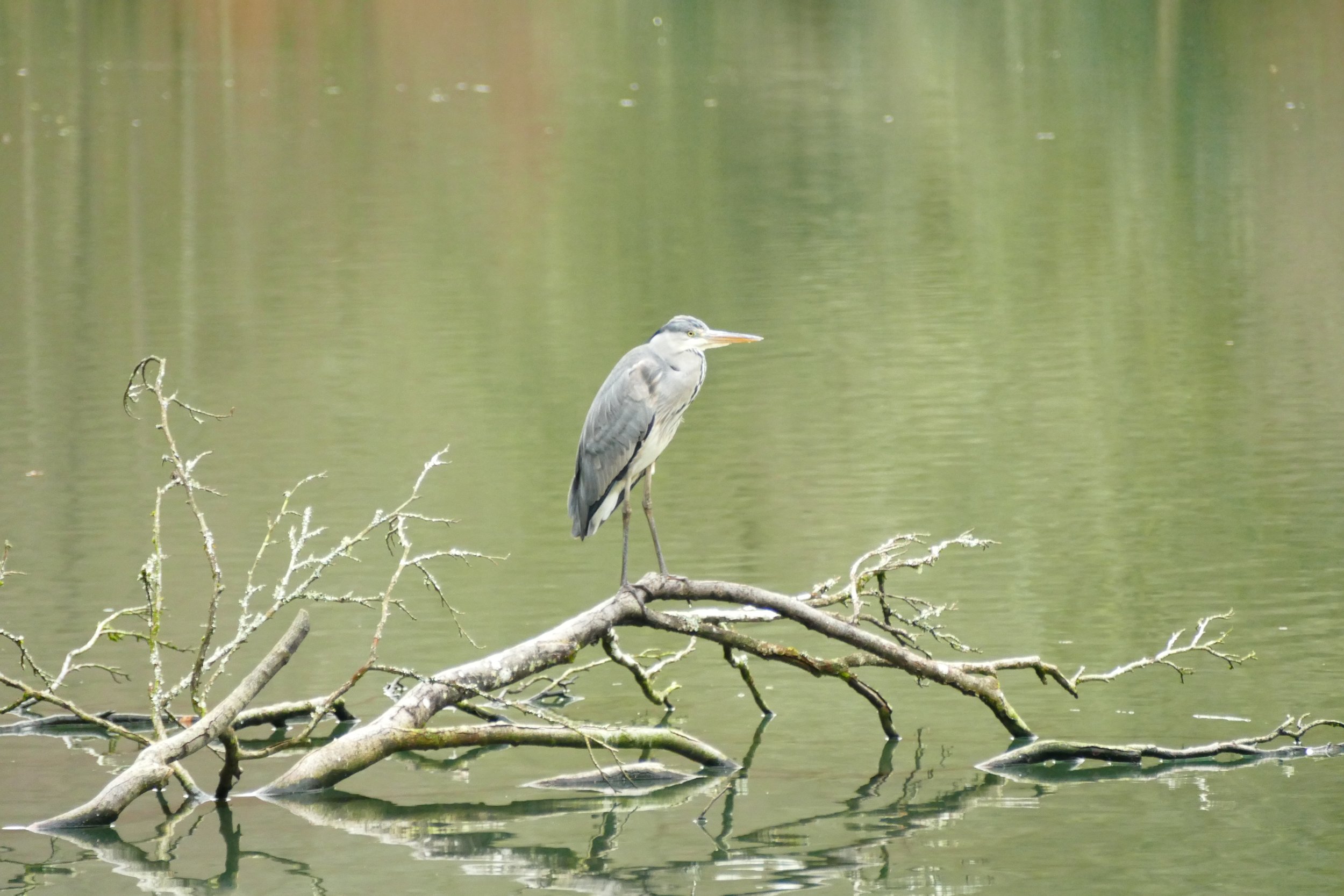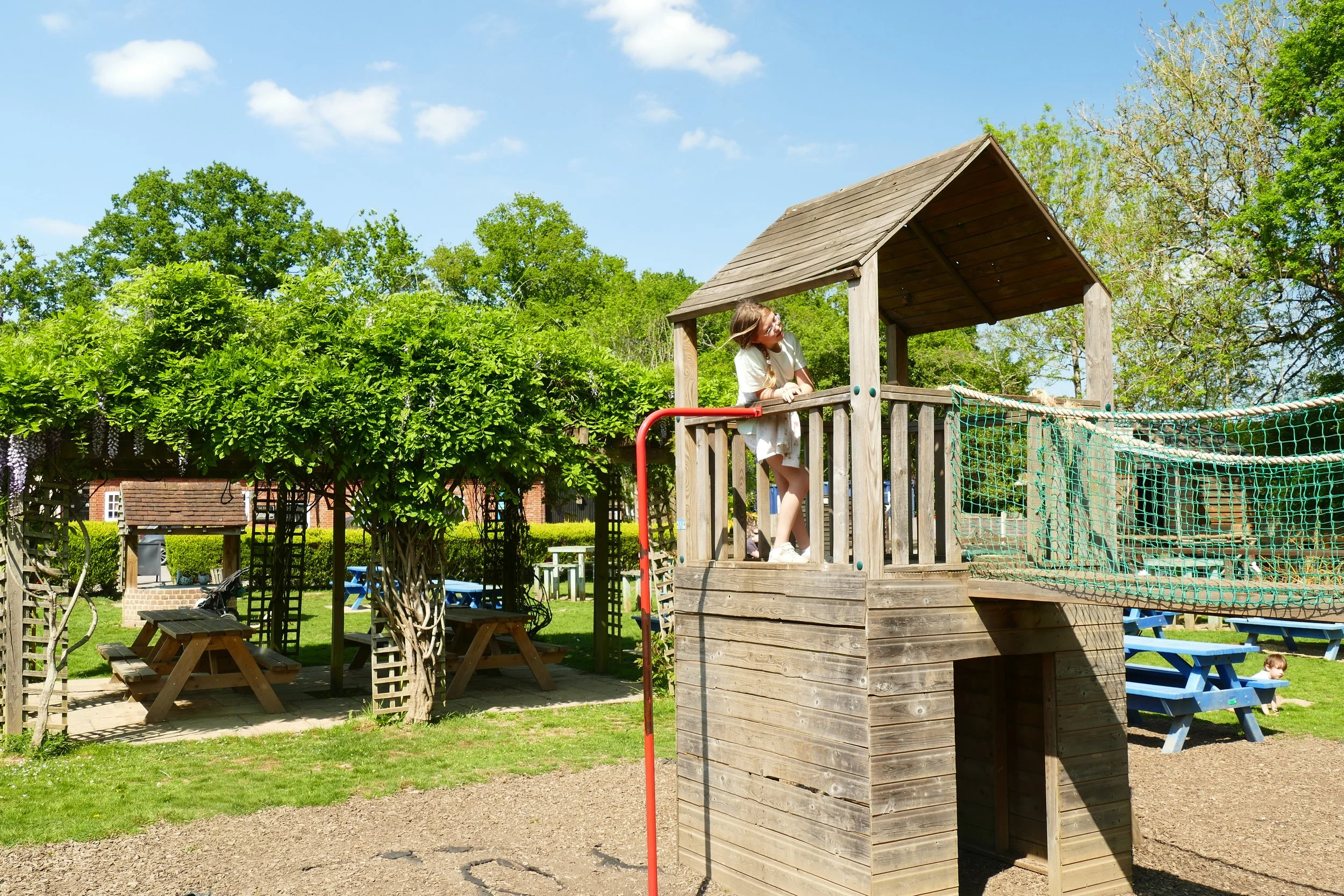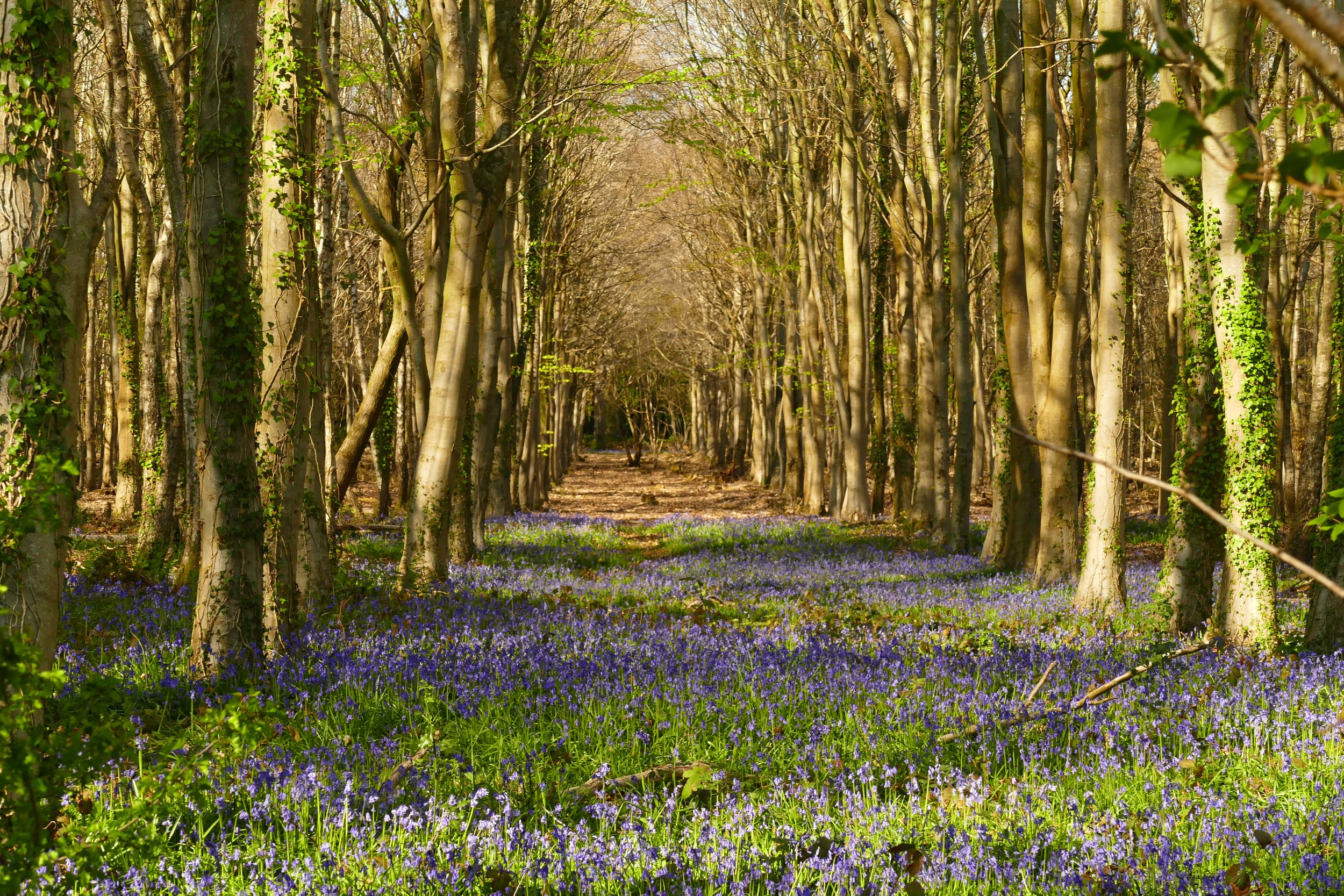Waggoners Wells
Grayshott
Children will enjoy feeding the ducks, splashing in the stream, climbing tree trunks and discovering a wishing well on this walk.
The ponds always look lovely in autunm
The Basics
Time: 30 minutes
Distance: 1.4 km / 1 mile
Terrain: Uneven woodland paths with some steps.
Pushchair: This route is not suitable for pushchairs.
Dogs: Dogs are welcome on this walk but should only swim in the first, top pond.
Refreshments: There are no refreshments on the walk but Grayshott is only a short drive away where you will find The Fox and Pelican.
Toilets: There are no public toilets on this walk.
Public Transport: Use Stagecoach route 32 between Haslemere and Liphook, alight at Waggoners Wells and walk down Waggoners Wells Road to the car park where this route begins.
Parking: National Trust car park at the end of Waggoners Wells Lane, free (Postcode: GU26 6DT - W3W: ///cave.replying.parkway)
Our children always love climbing the exposed roots of this tree
A stone’s throw from the A3 near Grayshott, The National Trust care for three interconnected ponds called Waggoners Wells. A walk around the ponds is really easy to navigate and you will spot ducks, fish and herons as you go. There is no play area, but our children often spend hours here climbing the fallen trees, making dens among the roots and playing in the streams.
The Route
Begin the walk by going down the steps at the end of the car park and turning left. You will pass a noticeboard on your left. Stay on the same path as it leads you down one side of the top pond with the water to your right. Continue and pass the second pond to your right as well.
After the third pond, look for a fork in the path and go right, leading to a slope down to a stream and a wooden footbridge. This is a nice place to play in the water and a little downstream is a fallen tree that makes a fun bridge to climb over.
Turn right on the other side of the bridge and follow the path up the opposite side of the ponds. They should now be in view to your right the whole way. Along this side, you will find the wishing well and a tree with an exposed root system, which makes another fun place to play.
Between the top and middle pond, look for the pathway on your right which will connect you back to where you started from. Alternatively, continue to the end of the top pond, where you will meet Waggoners Wells Lane. Turn right here, cross the ford and return to the car park.
As a member, you gain instant access to all 150 PDF files. Members also benefit from special members-only discounts at some of our favourite pit-stops.
Did you know?
The three ponds are actually man made, being thought to have been dug as hammer ponds for the iron industry.
It is said that Alfred Lord Tennyson composed 'The Flower in the Crannied Wall' at the wishing well in 1863.
If you enjoyed this walk…
…try connecting it to a longer walk with Bramshott Common
We are passionate about keeping The Ambling Path as a free resource available to everyone, forever. If you have enjoyed using our walking guides, then please consider leaving us a donation. This will help to cover our costs as well as rewarding the considerable time and effort needed to maintain the site. Thank you.



